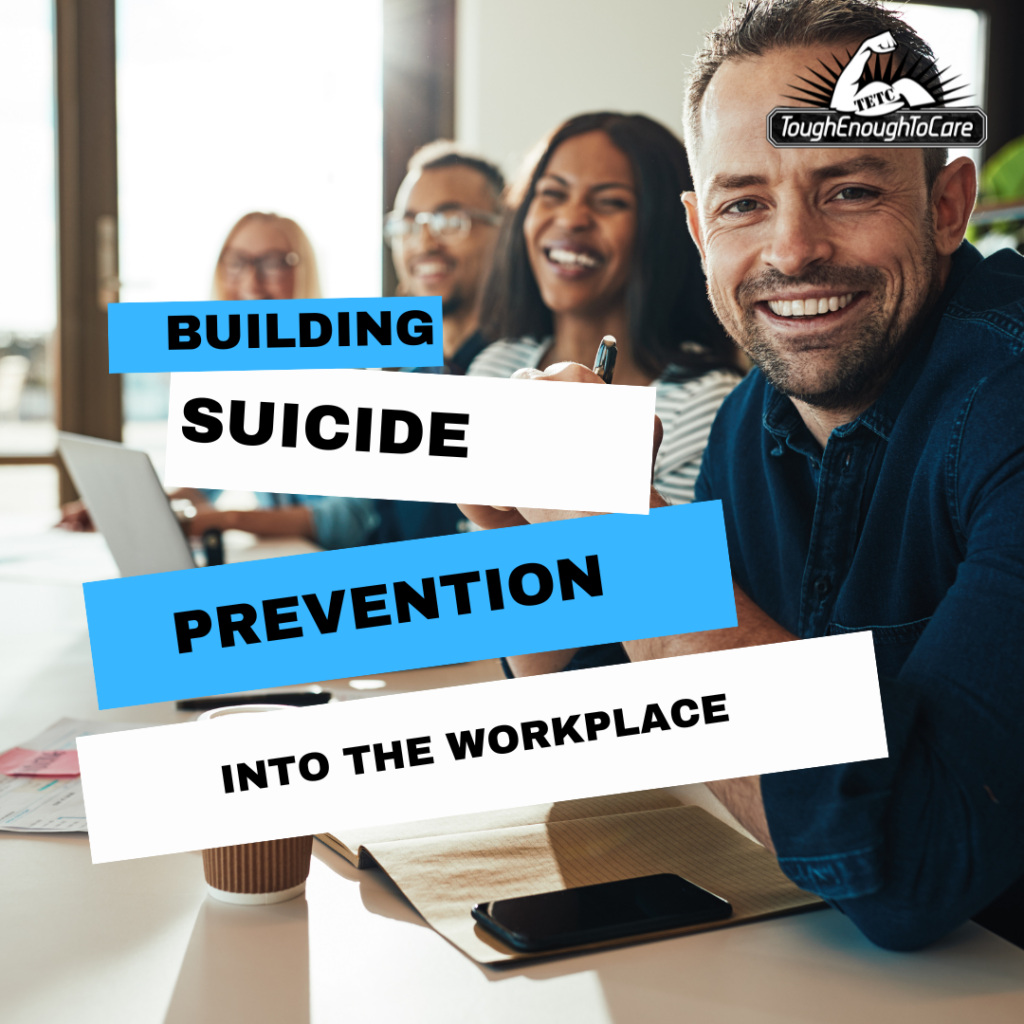
Building Suicide Prevention into the Workplace: Creating a Safe and Supportive Environment.
Many of us spend the majority of our lives in the workplace which, in turn, means that workplaces have a significant role in supporting mental health and preventing suicide. Creating an environment where employees feel safe and supported is crucial in fostering well-being and ensuring that those struggling with mental health issues can seek help without fear.
Sometimes it’s hard to know where to start. In this blog post we have explored some of the ways that you can incorporate good mental health practices and build suicide prevention into the workplace:
- Promote Mental Health Awareness
- Educational Programs: Offer regular training sessions on mental health and suicide prevention for all employees. Topics should include recognising signs of distress, understanding mental health issues, and how to approach someone who may be struggling.
- Information Resources: Provide easy access to information about mental health, available support services, and crisis intervention resources.
Visit https://toughenoughtocare.help/training/ to find out how we can help you.
- Create a Supportive Culture
- Open Conversations: It is essential to create an environment where talking about mental health and emotional well-being is normalised and encouraged. Leadership should model openness about mental health to set a tone for the rest of the organisation.
- Reduce Stigma: Actively work to reduce the stigma around mental health issues by integrating discussions into regular meetings and communications.
- Implement Clear Policies and Procedures
- Mental Health Policies: Develop and communicate clear policies regarding mental health support and crisis management. Ensure that employees understand their rights and the available support options.
- Crisis Response Plan: Have a plan in place for managing mental health crises, including immediate support and referral to professional help.
- Provide Access to Support Services
- Employee Assistance Programs (EAPs): Where possible offer access to EAPs that provide confidential counselling and support services. Ensure employees know how to access these resources and that they are actively promoted.
- Train Managers and Supervisors
- Mental Health Training: Equip managers with training to recognise signs of distress, provide support, and handle conversations about mental health sensitively and effectively.
- Supportive Leadership: Encourage managers to be proactive in supporting their teams’ mental health and to create an environment where employees feel comfortable seeking help.
- Encourage Work-Life Balance
- Flexible Work Arrangements: Offer flexible working hours, remote work options, and time off to help employees manage stress and personal responsibilities.
- Promote Well-being: Encourage activities and practices that promote well-being, such as regular breaks, physical activity, and mindfulness practices.
- Monitor and Evaluate
- Regular Surveys: Conduct anonymous surveys to gauge employee mental health and satisfaction with support services. Use feedback to make improvements.
- Continuous Improvement: Regularly review and update mental health policies and support mechanisms to ensure they meet employees’ needs and align with best practices.
- Encourage Help-Seeking Behaviour
- Visible Support: Ensure that support services and resources are visibly promoted and accessible. Create a culture where seeking help is encouraged and supported.
- Confidentiality Assurance: Assure employees that their mental health discussions and any actions taken will be handled confidentially and with respect.
- Recognise and Address Work-Related Stress
- Manage Workloads: Monitor and manage workloads to prevent burnout and excessive stress. Address any work-related issues that may contribute to mental health problems.
- Stress Management: Provide resources and training on stress management techniques and coping strategies.
Every step taken towards creating a supportive work environment can contribute to preventing suicide and ensuring that all employees feel empowered to seek help when needed.
FIND OUT MORE ABOUT OUR CORPORATE TRAINING PROGRAMMES AND TALKS HERE: Training – Tough Enough To Care


